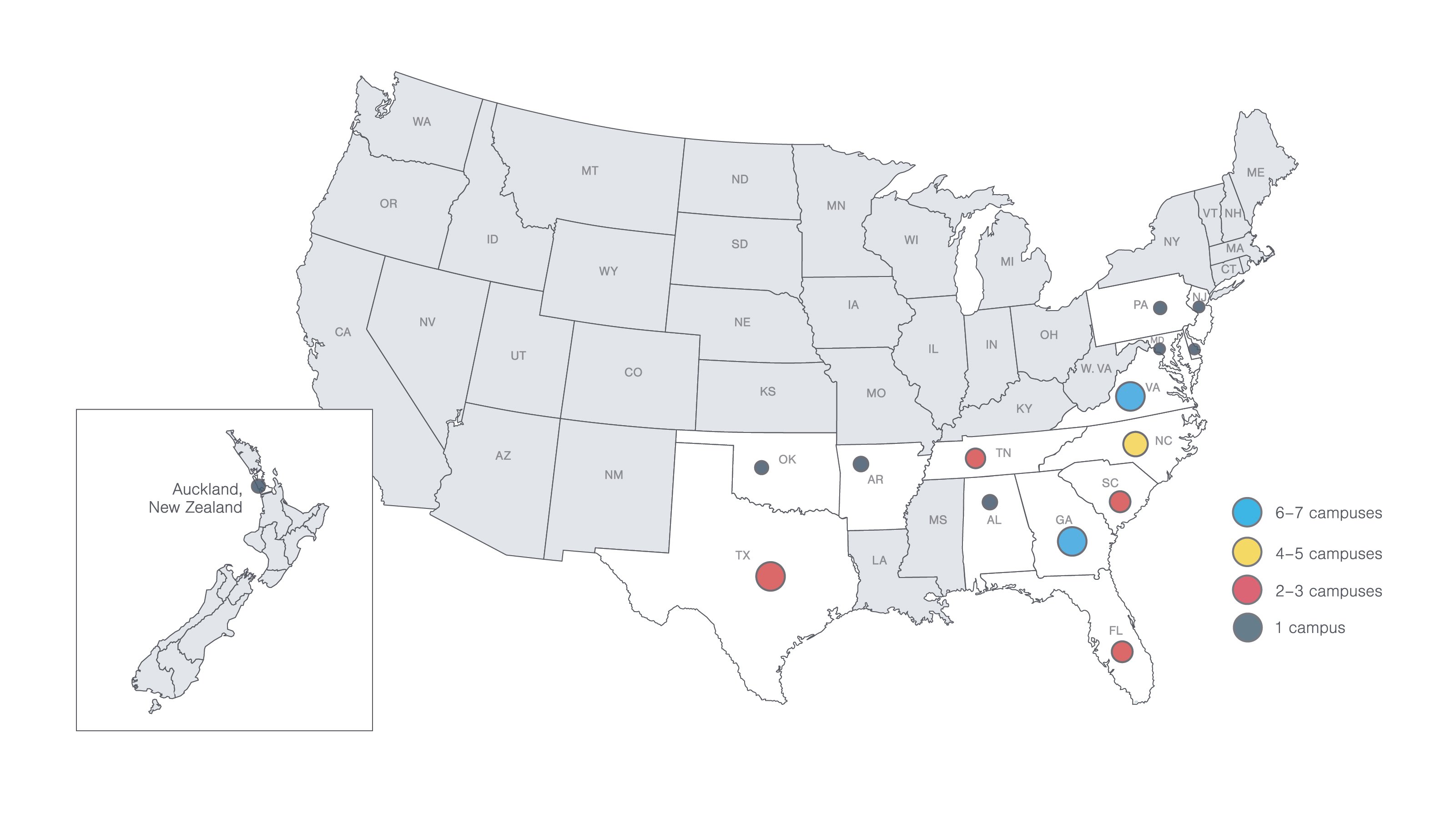Here’s a no-cost way to complete gen eds. Get details
Bachelor of Science in Health Services Administration Health Information Management and Analytics
PROGRAM AT A GLANCE
Why earn a degree in Health Information Management and Analytics from Strayer?
Get ready to enter the data-driven health care landscape with this concentration. You’ll build a foundation of data management and analytics through hands-on experience with electronic health records and industry software.
Play a vital role in data-driven healthcare management
The Health Information Management and Analytics concentration prepares students to obtain, analyze, and protect patient health information essential to quality care. Students will learn about roles, process and functions in health care settings through survey of health informatics, health records and information exchange, data management and analytics, software applications used in the U.S. health care system, as well as data use and presentation in health care.
Skills you’ll learn in a Strayer BS in Health Services Administration, Health Information Management and Analytics concentration
- Gain hands on experience using electronic health records (EHR) and explore health information exchange (HIE).
- Develop skills using an EHR, privacy and security, revenue cycle management topics, as well as governance and policy.
- Learn the basics of data management and use of data analytics in the U.S. health care system.
- Explore how to use and present information in a meaningful and efficient manner. Topics will include using data to create an infographic, summarizing data into a pictograph, collecting and grouping data for presenting, and utilizing data visualization tools.
- Gain hands-on experience using software applications used in the U.S. health care system and explore the use of artificial intelligence in health care.
Earn your degree from an accredited university
Strayer University is an accredited institution and a member of the Middle States Commission on Higher Education (MSCHE or the Commission) www.msche.org. Strayer University’s accreditation status is Accreditation Reaffirmed. The Commission’s most recent action on the institution’s accreditation status on June 22, 2017 was to reaffirm accreditation. MSCHE is recognized by the U.S. Secretary of Education to conduct accreditation and pre-accreditation (candidate status) activities for institutions of higher education including distance, correspondence education, and direct assessment programs offered at those institutions. The Commission’s geographic area of accrediting activities is throughout the United States.

Bachelor of Science in Health Services Administration in Health Information Management and Analytics cost breakdown
- 40 courses, $1525 per course
- $65 technology fee each term
- $150 one-time degree conferral fee
- Additional costs for textbooks and supplies
Estimate the cost of your degree
How much does a Bachelor of Science in Health Services Administration in Health Information Management and Analytics cost?
Estimate the cost of your degree
How much does a Bachelor of Science in Health Services Administration in Health Information Management and Analytics cost?
Expected Graduation
...
Approximate Total
...
*Student is required to take two courses per quarter during disbursement period
PREPARING YOUR RESULTS
Time commitment
Calculate the approximate time commitment of your degree.
| Course load | ... courses/term |
| Classroom time | ... hours/week |
| Terms per year | ... terms |
| Terms to graduation | ... terms |
Cost analysis
Calculate the approximate cost of your degree
| Tuition | ... |
| Books | ... |
| Fees | ... |
| No-cost gen ed | $0 |
| Transfer credits | ... |
| Transfer Credit Scholarship | $0 |
| $4K scholarship | $0 |
| Strayer Learn and Earn Scholarship | $0 |
| Approximate total | ... |
Opportunities to save on tuition
Employer Tuition Assistance
More than 500 organizations invest in their employees by partnering with Strayer University to offer access to discounted education programs.
The Strayer Learn and Earn Scholarship
For every three courses you pass, earn one on us, tuition-free, to be redeemed at the end of your program with the Strayer Earn and Learn Scholarship. Eligibility rules and restrictions apply. Connect with us for details.
Save up to $15,250 on your bachelor’s degree
As a Strayer student, you have access to no-cost gen ed courses through our affiliate, Sophia. Take up to two online Sophia courses at a time and transfer eligible courses towards your undergraduate degree.
*Savings assumes transferring 10 courses taken at Sophia. Eligibility rules apply. Connect with us for details.
What coursework do you need to specialize in Health Information Management and Analytics?
All BSHS students take a set list of required major courses. All students also take a set of general education classes for a well-rounded education. The remaining credits come from their choice of concentration. View all courses
What is a minor in college?
A minor is a group of five courses in a select subject area that can add depth to your resume and round out your degree. Pursuing a minor offers you the opportunity to gain knowledge and skills in a secondary area of interest outside of your major and concentration.
How does a minor work?
Since you can use elective courses to complete a minor, in some cases you may not have to spend extra time or money on additional courses to complete your degree. Keep in mind that courses used to complete your major can’t be applied toward a minor.
Should you get a minor in college?
Getting a minor can help give you professional skills. It demonstrates your forward thinking, self-motivation and organization – all valuable skills in the workplace.
Sample courses

Being an effective communicator is an essential skill for any profession. In this course, you will learn the secrets to writing, listening, and speaking with credibility in order to share your voice with the world.

With a focus on adapting through change, the course provides an introduction to today’s business operations including the product, the pitch, the profit, the people, the competition, and more. This course introduces the concept of the S-Curve and shows how continuous innovation creates personal and professional growth. Students will also learn how to identify a company’s strengths, weaknesses, opportunities, and threats while understanding how companies adapt and innovate along the S-Curve.
The course introduces students to the field of health informatics in the United States. It provides a brief history and development of the field, structures and standards in health care organizations important for all leaders and mangers to understand, patient informatics, software applications, electronic health records, meaningful use, health related data (quality assessment, standards, integrity) and Health Insurance Portability and Accountability Act (HIPAA).
In this course students will have the opportunity to gain hands-on experience using electronic health records (EHR) and explore health information exchange (HIE). Topics include a brief history and use of health data management in healthcare organizations, health information technology, information exchange, identifying characteristics of the EHR, the opportunity to develop skills using an EHR, privacy and security, revenue cycle management topics, as well as governance and policy. Prerequisite: HSA 350
This course will provide an overview of data management and analytics for health information management. Students will learn the basics of data management and use of data analytics in the US Healthcare System. Topics will include types of data, sources of data, healthcare code sets, terminology and classification systems, how data is retained and analyzed, standards, as well as who is using the data. Prerequisite: HSA 350
This course will introduce students to software applications and how they are used in the US Healthcare System. Students will study data collection design, grouping, analyzing and presenting information. Additionally, students will have the opportunity to have hands-on experience using software applications and explore the use of artificial intelligence in healthcare. Prerequisite: HSA 350
In this course, students will explore how to use and present information in a meaningful and efficient manner. Topics will include using data to create an infographic, summarizing data into a pictograph, collecting and grouping data for presenting and utilizing data visualization tools. Additionally, students will explore how data is used in quality improvement and evidence-based research. Students will explore different types of data presentation methods based on the intended audience. Prerequisite: HSA 350
What can you do with a BS HSA, Health Information Management and Analytics degree?
Your education can help you pursue your professional and personal goals. While Strayer cannot guarantee that a graduate will secure any specific career outcome, such as a job title, promotion or salary increase, we encourage you to explore the potential impact you can have in the health information management and analytics field.
Versatile skills for your future
The health information management and analytics concentration prepares you to obtain, analyze and protect patient information. You’ll learn about roles, processes and functions in healthcare settings using health informatics, health records, data management and analytics.
In addition, students who complete this concentration will be prepared to:
- Evaluate and select informatics solutions, data structures and mechanisms to support patients and healthcare professionals, and their interactions within healthcare settings.
- Learn to ensure the privacy, confidentiality and security of patient information.
- Communicate with and provide information to supervisors, co-workers and subordinates.
- Identify underlying principles and facts by breaking down information or data into separate parts.
- Enter, transcribe, store and maintain information in written or electronic forms.
- Obtain, process and verify information from relevant sources.
- Use information technology to solve problems and develop solutions.
86
of Strayer bachelor’s alumni agree that Strayer was the right choice for earning their degree.
Strayer Alumni Survey, 2022
Apply for your Health Information Management and Analytics degree today
An admissions officer can help you choose the right program, register for classes, transfer credits and find cost-savings opportunities.
Here’s what you’ll need to get started:
Winter classes start on January 5
Learn more about Strayer University’s admissions process.
Transferring to Strayer from another university?
Your bachelor’s degree from Strayer could be 70% complete when you transfer up to 28 classes.
Strayer welcomes international students
Strayer University is proud to have hosted more than 4,000 international students from over 110 countries. Earn your degree in the U.S. or completely online in your home country – it’s your choice.


Campus locations
Come to a campus near you for guidance and support. You’ll have access to helpful resources, a supportive community and plenty of spaces to learn and grow.
Ready to take the next step?
Your admissions officer is here to guide you through every step of the process, from completing your application to choosing your concentration.